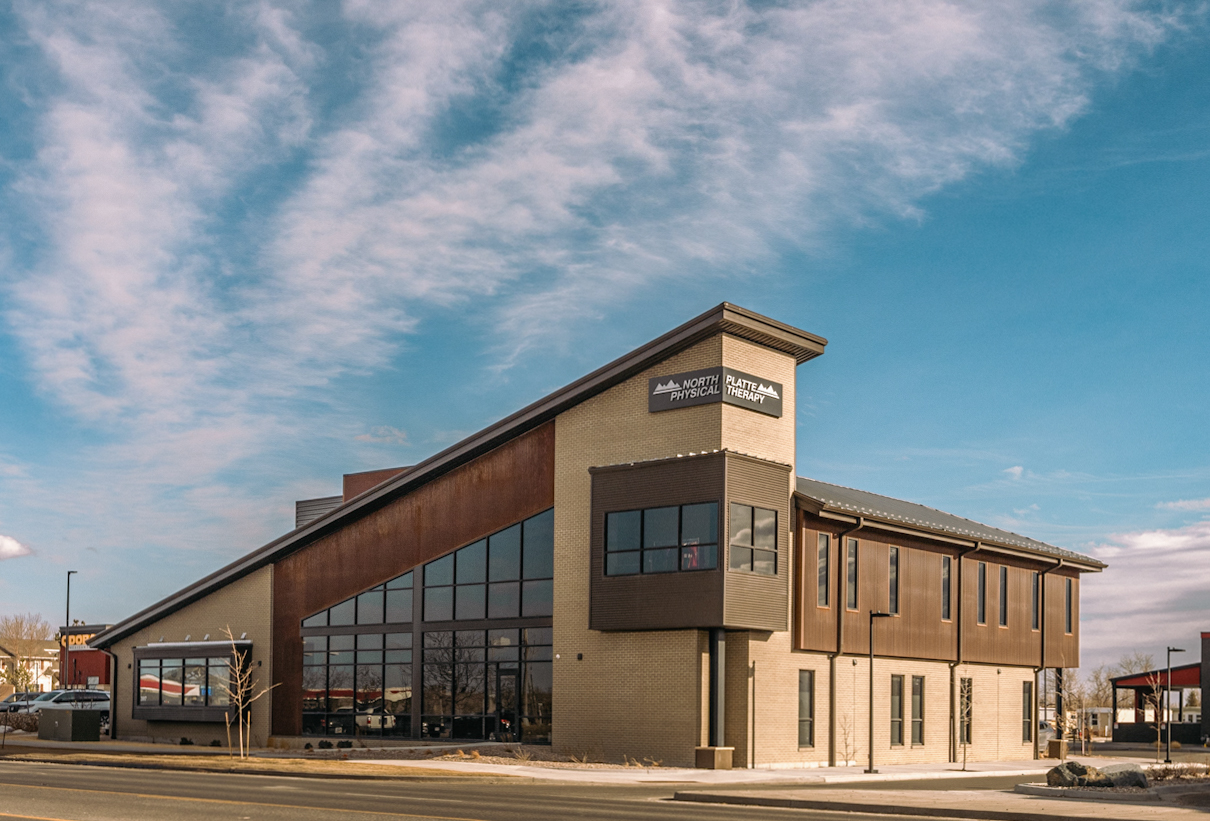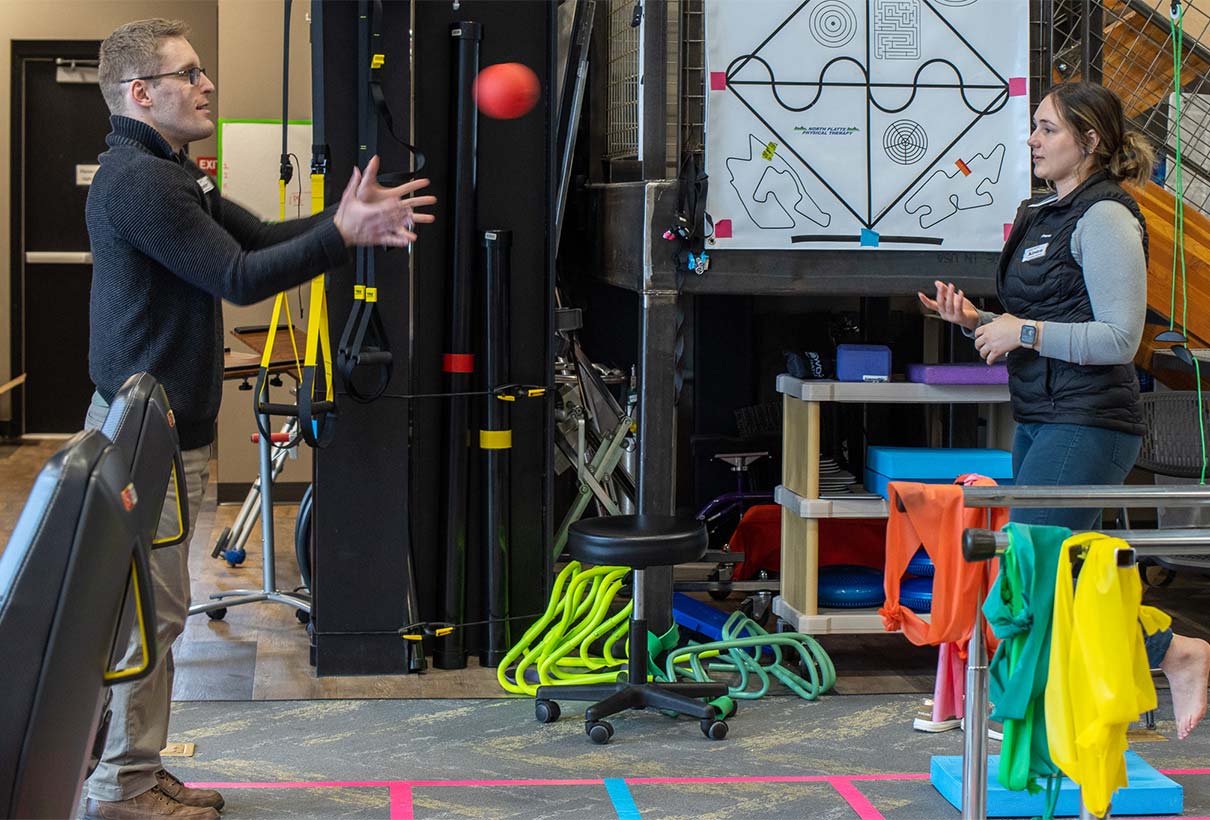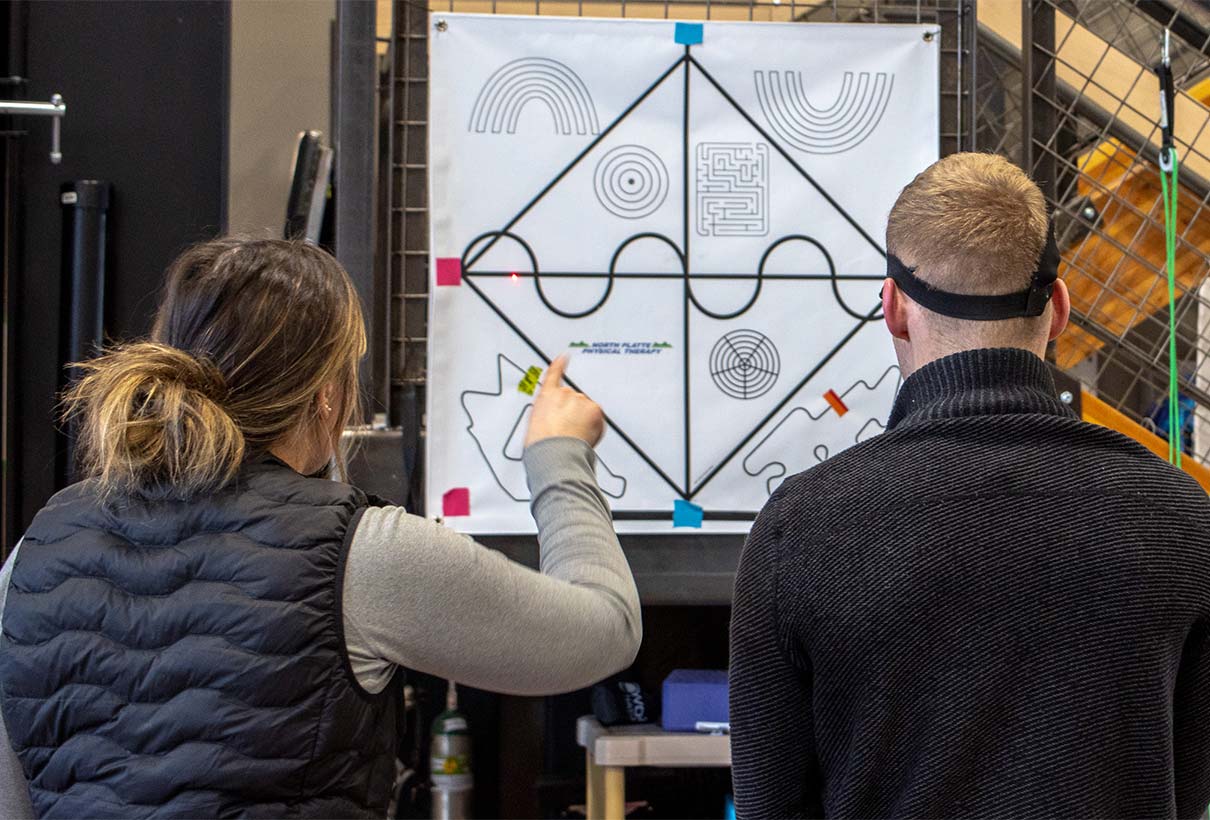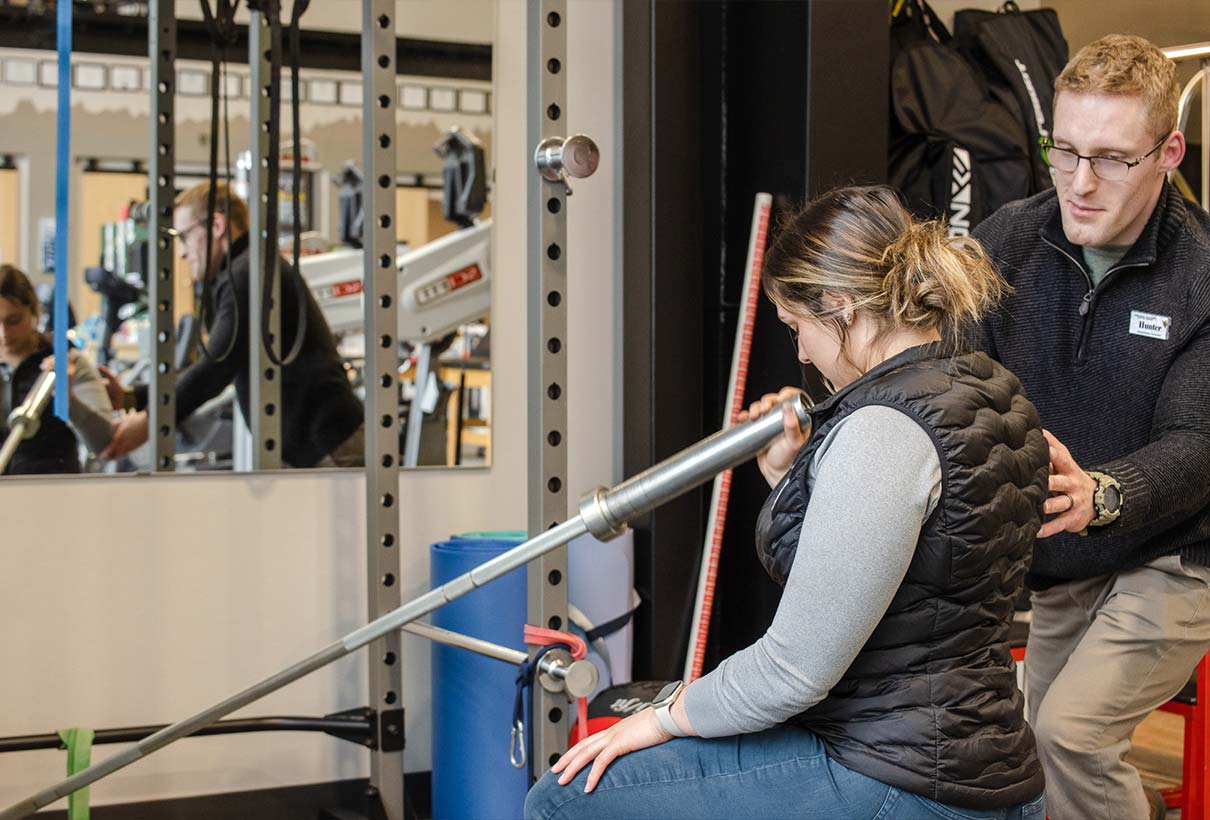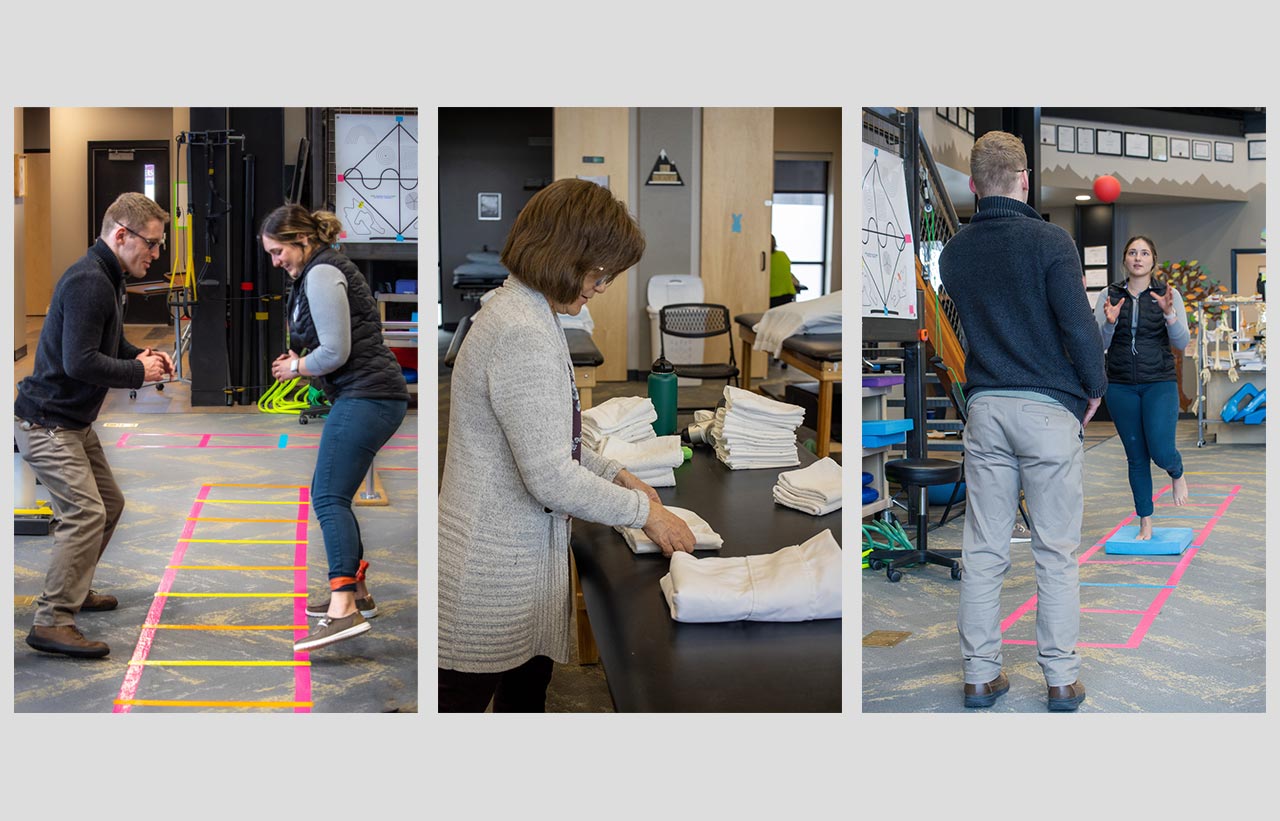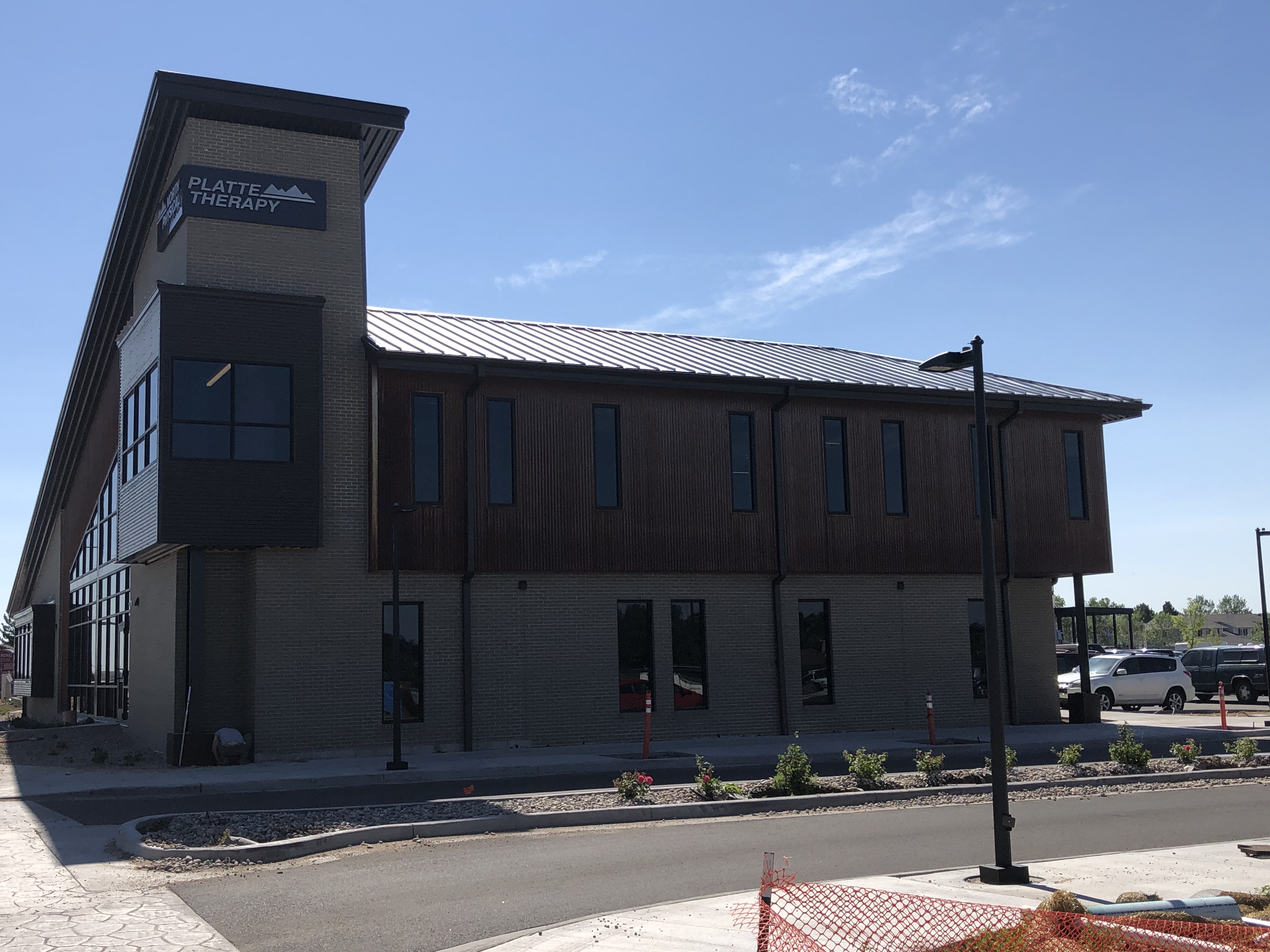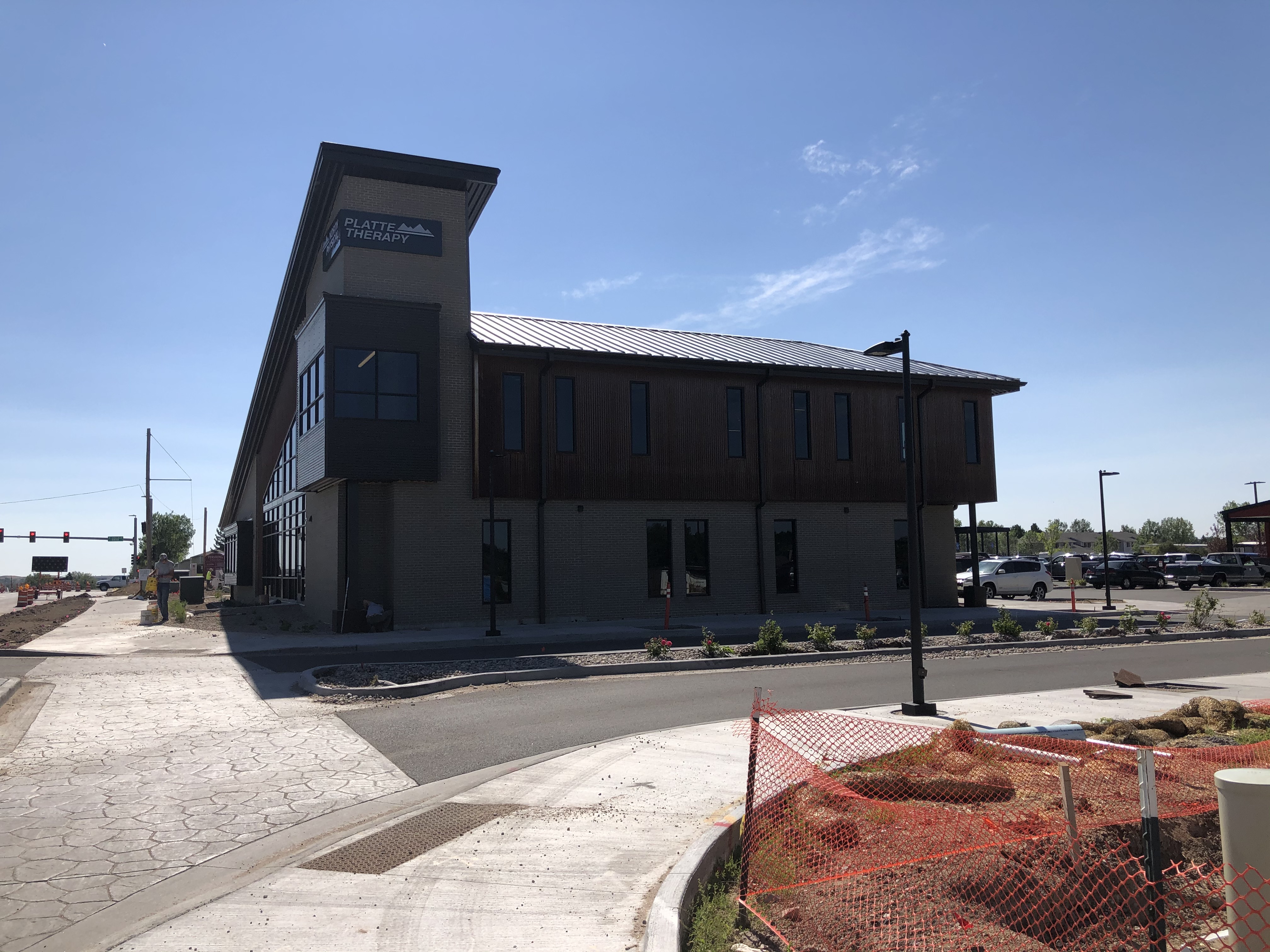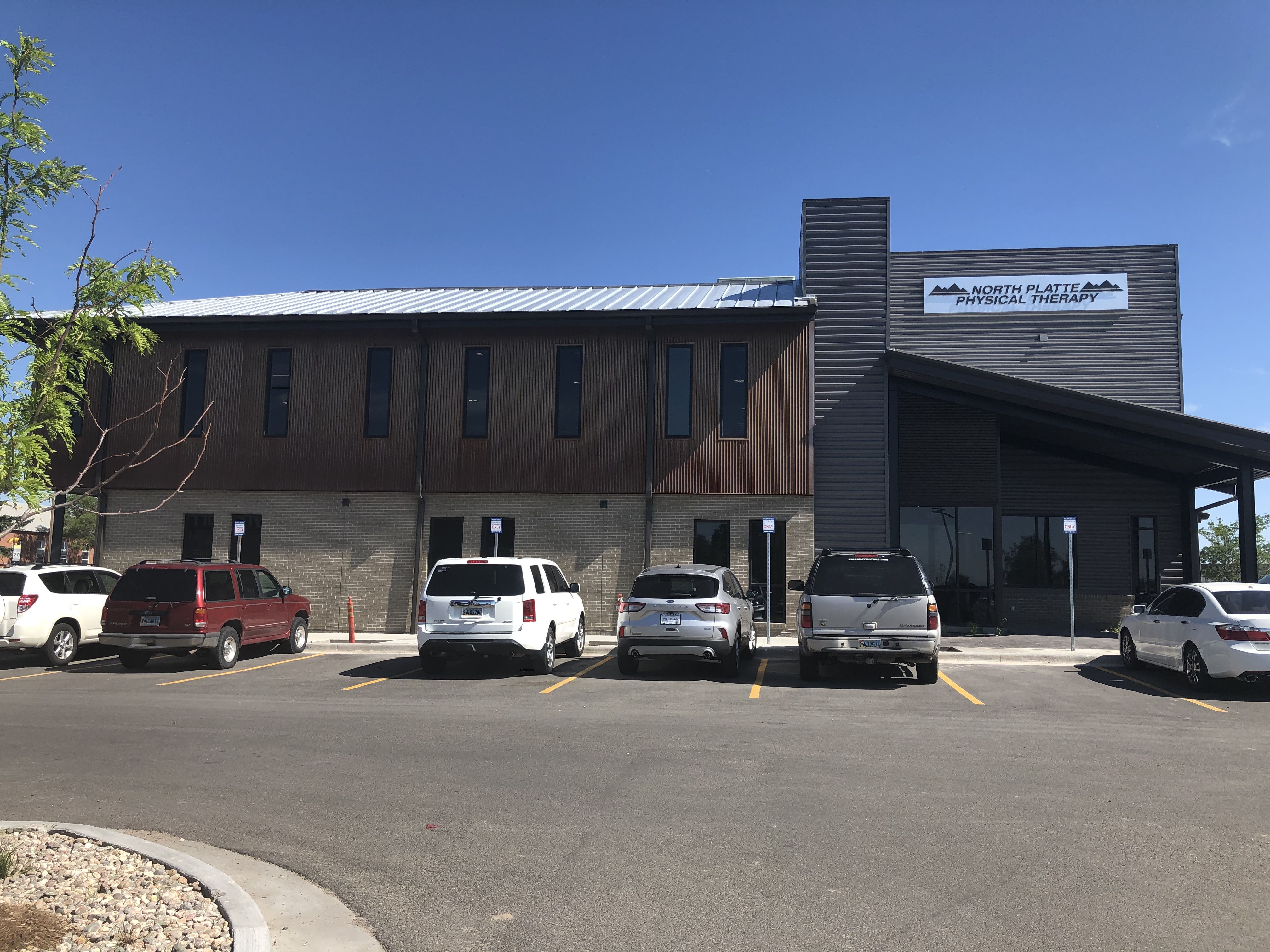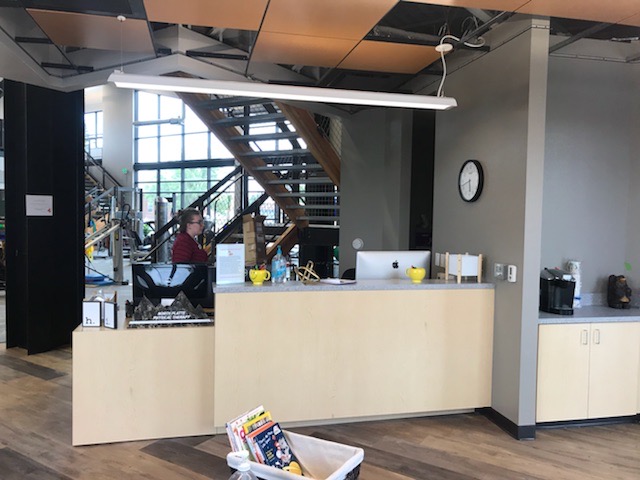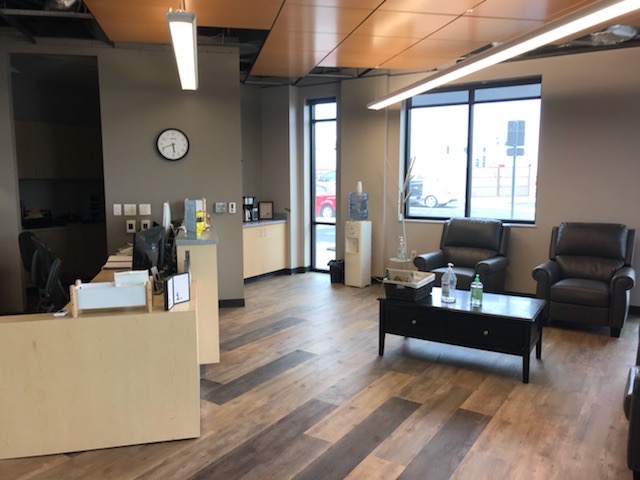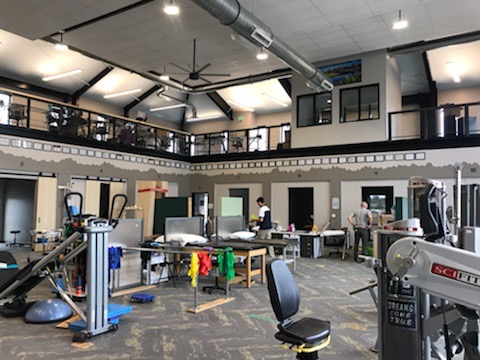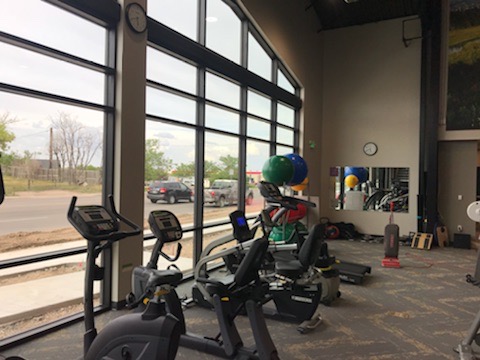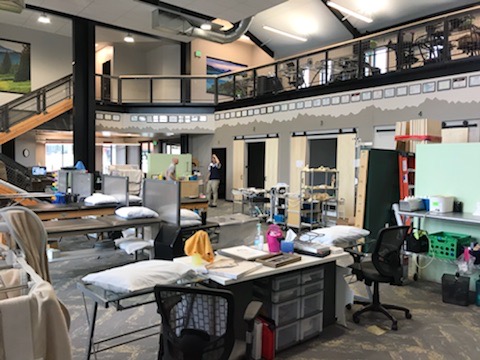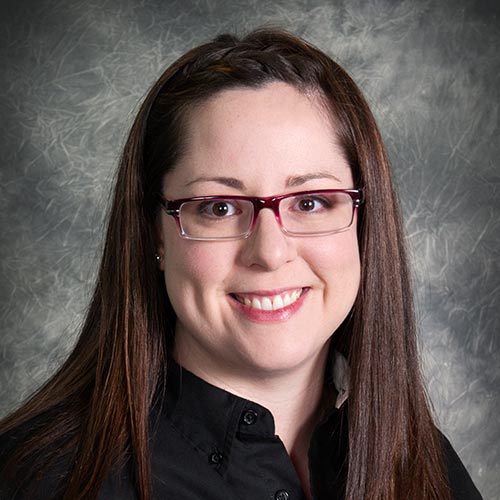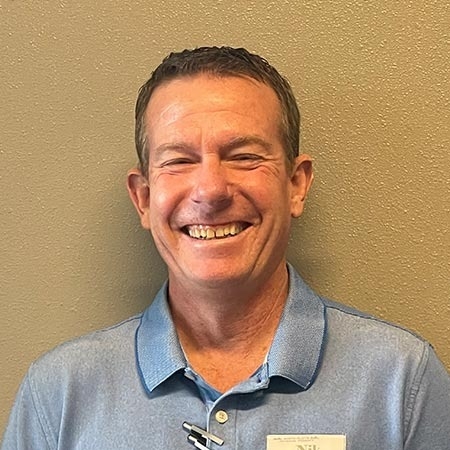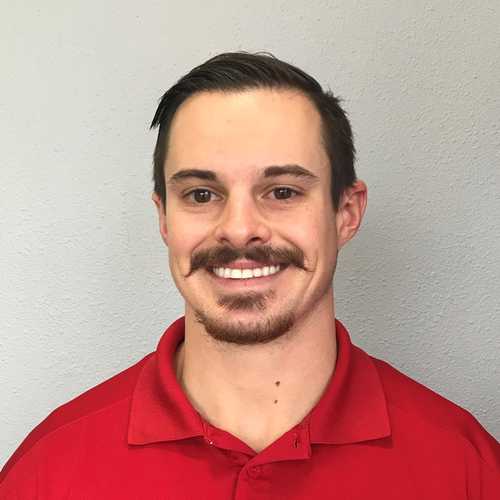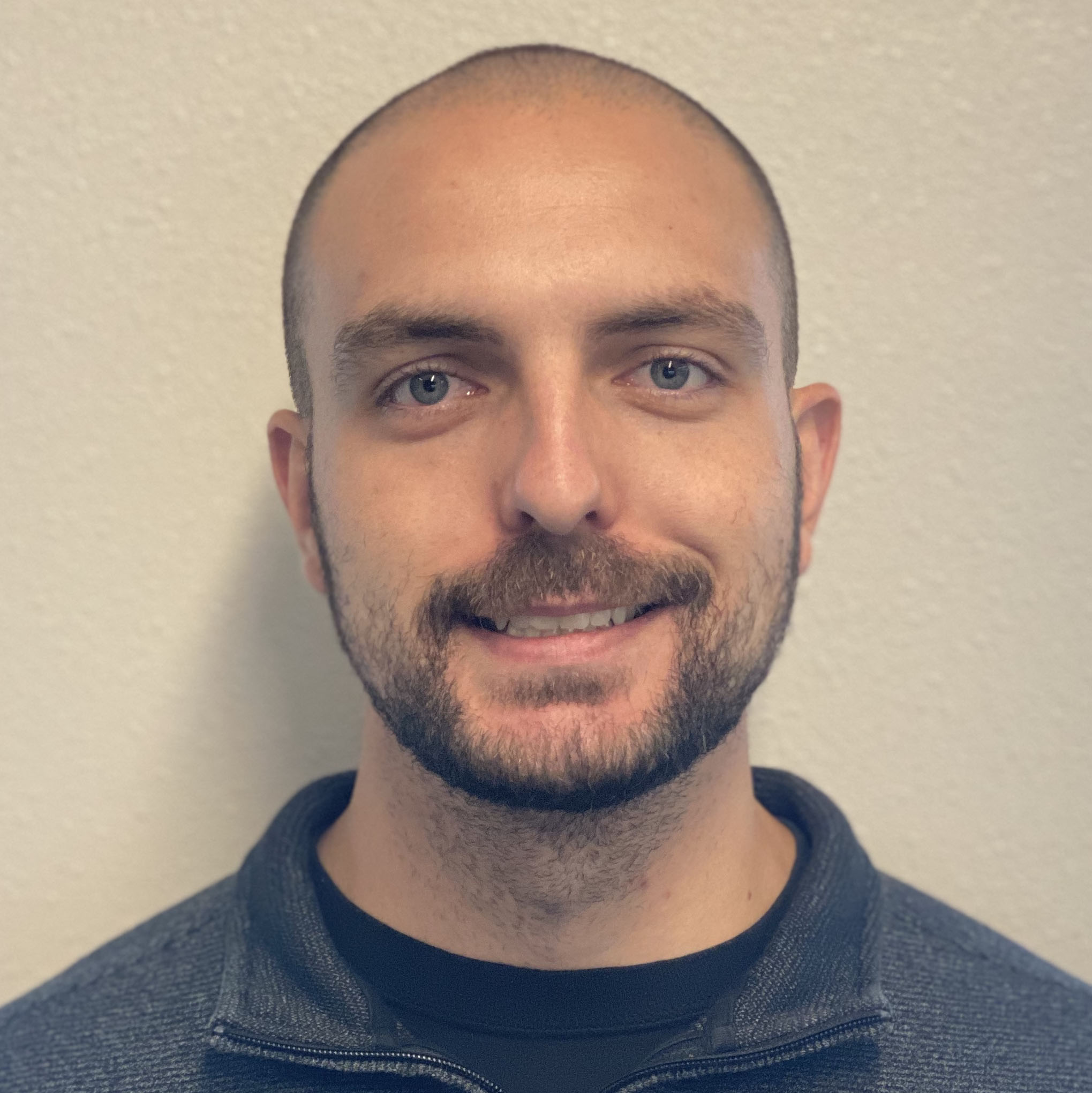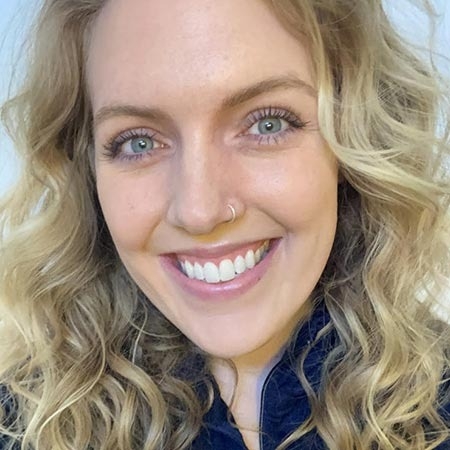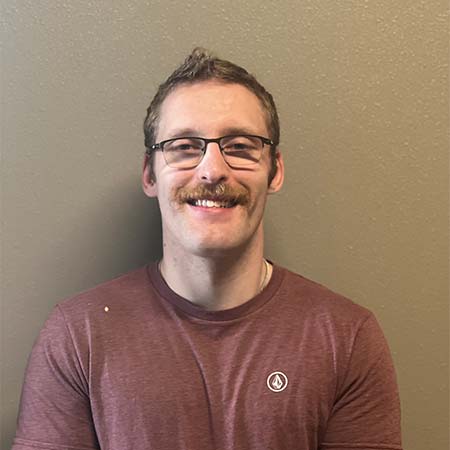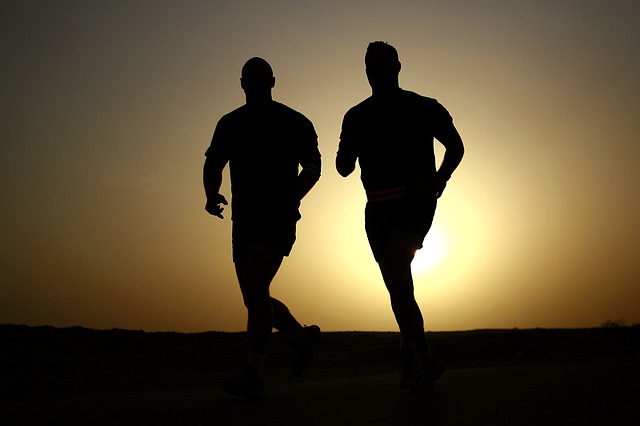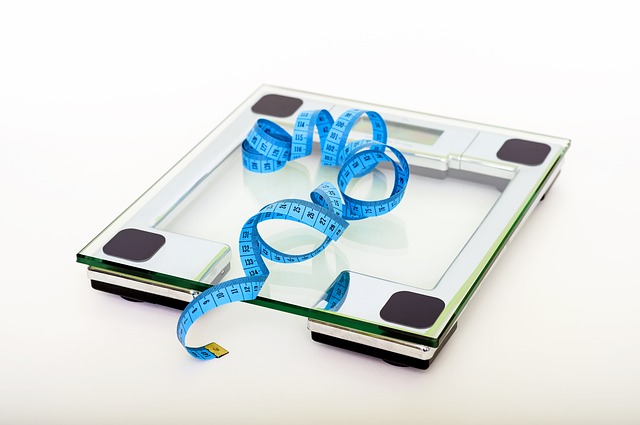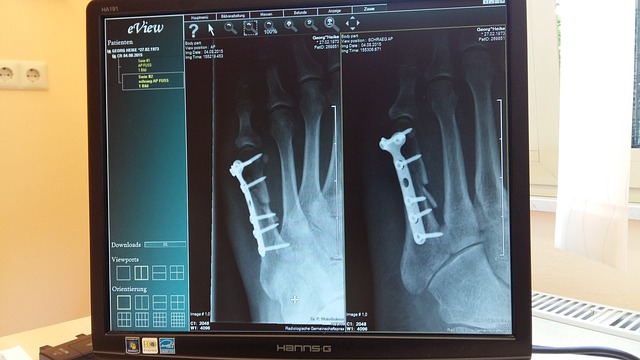North Platte Physical Therapy - Cheyenne (East)
North Platte Physical Therapy East is located at 3917 E Pershing Blvd and is open to serve patients Mon-Fri 6 a.m. - 6 p.m. Services provided include back and neck pain rehabilitation, outpatient wound care, post-op rehab, sports therapy, aquatic therapy, dry needling, kinesio taping, women's health, work hardening, vestibular and neurological rehabilitation. Walk-ins are always welcome.
Call 307-514-2411 to schedule today.
Location Details
307-514-2411 Send Email
Address: 3917 East Pershing Blvd. Cheyenne, Wyoming 82001
Hours: Mon - Fri: 6:00 a.m to 6:00 p.m.
Fax: 307-514-2392
Hours: Mon - Fri: 6:00 a.m to 6:00 p.m.
Fax: 307-514-2392
Interested in scheduling at our North location? View Cheyenne North Details
Strokes & Physical Therapy in Cheyenne WY
A stroke occurs when the blood flow to the brain is cut off and brain cells begin to die as a result of the loss of oxygen. In the U.S., almost 800,000 people experience a stroke every year. Strokes are often fatal—in fact, stroke is considered the fifth leading cause of death in the U.S. Learn more about what stroke is here. If you have suffered a stroke, it’s important to know the many ways that physical therapy in Cheyenne WY can help you during your recovery.
Walking Aids
Many people who have suffered a stroke will need to use some sort of walking aid to get around. If you will need a walker, cane, or wheelchair after a stroke, let a physical therapist help you find one with the perfect fit. For example, a physical therapist will help you find a wheelchair with the perfect seat width by measuring your hips and adding two inches onto this measurement. If you use a walking aid or wheelchair that does not fit your body properly, you may develop aches and pains that bother you even when you are not moving around.
Balance
If you have suffered a stroke, you may struggle with maintaining your balance. This occurs because one side of the body is typically weaker after a stroke, which will throw off your stance, and therefore your balance. This may not seem like a serious issue, but if you can’t find your balance, you are at a greater risk of falling and seriously injuring yourself. Luckily, a physical therapist can develop a treatment program designed to improve your balance and reduce your fall risk. This may include gentle exercises to strengthen your muscles that keep you upright, or fall prevention strategies such as removing any obstacles in your home that may trip you.
Education
If you’ve had a stroke, there’s a possibility that you could suffer from another one in the future. Part of your physical therapy treatment program could consist of education for you and your family members so everyone knows how to quickly spot the signs of a stroke. A key to spotting a stroke is remembering the acronym F.A.S.T., which stands for Face drooping, Arms drifting downward, Slurred speech, and Time to call 9-1-1. Once you spot any of these symptoms, it’s imperative to call for emergency help. If you and your family members know how to spot a stroke, you will be able to quickly get help if you do have another one in the future. The sooner you receive treatment for a stroke, the better the outcome may be. Â
At North Platte Physical Therapy, we’re dedicated to helping clients recover from strokes. If you or a loved one has suffered a stroke, contact North Platte Physical Therapy to learn more about how we can help during recovery. Our staff is praised throughout the Wyoming and Nebraska areas for our commitment to our clients. We can fulfill comprehensive physical therapy services, and would be happy to customize a treatment plan for your personal needs.
Read More...
Walking Aids
Many people who have suffered a stroke will need to use some sort of walking aid to get around. If you will need a walker, cane, or wheelchair after a stroke, let a physical therapist help you find one with the perfect fit. For example, a physical therapist will help you find a wheelchair with the perfect seat width by measuring your hips and adding two inches onto this measurement. If you use a walking aid or wheelchair that does not fit your body properly, you may develop aches and pains that bother you even when you are not moving around.
Balance
If you have suffered a stroke, you may struggle with maintaining your balance. This occurs because one side of the body is typically weaker after a stroke, which will throw off your stance, and therefore your balance. This may not seem like a serious issue, but if you can’t find your balance, you are at a greater risk of falling and seriously injuring yourself. Luckily, a physical therapist can develop a treatment program designed to improve your balance and reduce your fall risk. This may include gentle exercises to strengthen your muscles that keep you upright, or fall prevention strategies such as removing any obstacles in your home that may trip you.
Education
If you’ve had a stroke, there’s a possibility that you could suffer from another one in the future. Part of your physical therapy treatment program could consist of education for you and your family members so everyone knows how to quickly spot the signs of a stroke. A key to spotting a stroke is remembering the acronym F.A.S.T., which stands for Face drooping, Arms drifting downward, Slurred speech, and Time to call 9-1-1. Once you spot any of these symptoms, it’s imperative to call for emergency help. If you and your family members know how to spot a stroke, you will be able to quickly get help if you do have another one in the future. The sooner you receive treatment for a stroke, the better the outcome may be. Â
At North Platte Physical Therapy, we’re dedicated to helping clients recover from strokes. If you or a loved one has suffered a stroke, contact North Platte Physical Therapy to learn more about how we can help during recovery. Our staff is praised throughout the Wyoming and Nebraska areas for our commitment to our clients. We can fulfill comprehensive physical therapy services, and would be happy to customize a treatment plan for your personal needs.
Physical Therapist in Wyoming Explains the Difference Between Stretching and Warming Up
March 22, 2017
If you’re an active person, you’ve probably heard that you need to stretch and warm up before a workout, but do you know why? Many people assume that stretching and warming up are the same, but according to a physical therapist in Wyoming, they’re actually quite different. Here’s what you need to know about both of these activities:
The American College of Sports Medicine recommends that you stretch at least two times per week, and even more if you are elderly or exercising on a daily basis. It is best to think of stretching as something that should be part of your everyday life instead of limiting it to only before and after workouts. Learn how to stretch here.
Although stretching and warming up both increase the flexibility of your muscles, warming up goes one step further by getting your whole body prepared for the workout. So, the next time you plan on working out, start off with low intensity cardio by speed walking or going for a slow jog. It’s best to warm up for about 10-15 minutes so your heart rate and temperature have enough time to increase and get your body ready for the work ahead. Getting into the habit of warming up before you exercise can keep you healthy and injury-free!
At North Platte Physical Therapy, we’re dedicated to helping clients prevent injuries as they enjoy their favorite physical activities. But accidents happen, so if you do injure yourself while exercising or because of an accident, contact North Platte Physical Therapy to learn more about how we can help you recover. Our staff is praised throughout the Wyoming, and Nebraska areas for our commitment to our clients. We can fulfill comprehensive physical therapy services, and would be happy to customize a treatment plan for your personal needs.
Read More...
Stretching
Stretching on a regular basis can help improve your flexibility and increase your range of motion. Additionally, stretching can relieve tension that you may be holding in your muscles and make you feel less stressed out. It can also help you keep your muscles loose so you don’t feel any aches or pains after a tough workout. If you are experiencing pain related to bad posture, stretching can also help you realign your body so you can correct your posture problems and prevent future pain.The American College of Sports Medicine recommends that you stretch at least two times per week, and even more if you are elderly or exercising on a daily basis. It is best to think of stretching as something that should be part of your everyday life instead of limiting it to only before and after workouts. Learn how to stretch here.
Warming Up
Although many athletes often say they injured themselves because they forgot to stretch prior to a workout, they could be mistaken. Many injuries are actually caused by not properly warming up. What is warming up? Before engaging in any type of physical activity, you should get your body ready by starting off slow to gently engage each group of muscles and prepare them for a more strenuous workout. When you warm up, your heart rate starts to increase, which means your muscles will receive more nutrients and oxygen. Warming up also increases your body temperature, which leads to your muscles becoming more pliable, and thus lowering the risk of injury.Although stretching and warming up both increase the flexibility of your muscles, warming up goes one step further by getting your whole body prepared for the workout. So, the next time you plan on working out, start off with low intensity cardio by speed walking or going for a slow jog. It’s best to warm up for about 10-15 minutes so your heart rate and temperature have enough time to increase and get your body ready for the work ahead. Getting into the habit of warming up before you exercise can keep you healthy and injury-free!
At North Platte Physical Therapy, we’re dedicated to helping clients prevent injuries as they enjoy their favorite physical activities. But accidents happen, so if you do injure yourself while exercising or because of an accident, contact North Platte Physical Therapy to learn more about how we can help you recover. Our staff is praised throughout the Wyoming, and Nebraska areas for our commitment to our clients. We can fulfill comprehensive physical therapy services, and would be happy to customize a treatment plan for your personal needs.
How Children With Autism Benefit From Physical Therapy in Cheyenne WY
March 15, 2017
When you think of physical therapy, images of older or injured adults recovering from surgery probably come to mind. However, physical therapy is not just for those who are aging or injured. In fact, special needs children such as those with autism can greatly benefit from regular physical therapy in Cheyenne WY. Here’s how:
Physical therapists can also help children learn how to use these motor skills to play on their own or with others. For example, therapists can work with kids to help them understand how to climb on a playground or kick a ball in a game of soccer. They can also help them improve their motor planning skills. For instance, kids with autism may be able to climb into a swing, but they still might not be able to figure out how to pump their legs to get the swing to move. In this case, a physical therapist can focus on motor planning to fine tune these skills, which will help the child become more socialized as he learns how to play with others.
At North Platte Physical Therapy, we’re dedicated to helping clients of all ages and abilities. If you’re curious about physical therapy, contact North Platte Physical Therapy to learn more about how we can help you and your children live healthier lives. Our staff is praised throughout the Wyoming and Nebraska areas for our commitment to our clients. We can fulfill comprehensive physical therapy services, and would be happy to customize a treatment plan for your personal needs.
Read More...
Imitation Skills
Children who have autism often do not develop imitation skills on their own. What are imitation skills? When children are young, they often imitate what they see people around them doing. These skills will eventually help children socialize and learn to speak, so they are crucial to a child’s development. If your child has not mastered his imitation skills, a physical therapist can help. For example, trained physical therapists can use fun songs such as “Head, Shoulders, Knees, and Toes†to help children learn how to mimic movements. Learn more about imitation skills.Motor Skills
Children with autism typically have limited motor skills, which makes it difficult for them to navigate through their daily lives. A physical therapist can work one-on-one with affected children to help them improve their balance and develop the muscle strength they need to perform daily activities. After attending regular physical therapy sessions, children with autism may see improvements in their ability to sit upright, walk, run, and jump without assistance.Physical therapists can also help children learn how to use these motor skills to play on their own or with others. For example, therapists can work with kids to help them understand how to climb on a playground or kick a ball in a game of soccer. They can also help them improve their motor planning skills. For instance, kids with autism may be able to climb into a swing, but they still might not be able to figure out how to pump their legs to get the swing to move. In this case, a physical therapist can focus on motor planning to fine tune these skills, which will help the child become more socialized as he learns how to play with others.
Posture
If you’ve ever seen a physical therapist after an injury, you know the importance of good posture. Practicing good posture can prevent painful injuries caused by slouching your shoulders or hunching your back. Unfortunately, children with autism often suffer from generalized joint hypermobility (GJH), which can cause weak muscles, and therefore bad posture. A physical therapist can help by correcting any misalignments that are often found in the postures of children with autism and teaching them the importance of sitting up straight to elongate their spines.At North Platte Physical Therapy, we’re dedicated to helping clients of all ages and abilities. If you’re curious about physical therapy, contact North Platte Physical Therapy to learn more about how we can help you and your children live healthier lives. Our staff is praised throughout the Wyoming and Nebraska areas for our commitment to our clients. We can fulfill comprehensive physical therapy services, and would be happy to customize a treatment plan for your personal needs.
Your Weight Loss Journey and Physical Therapy in Cheyenne, WY
Almost 100 million Americans are considered overweight and it is never a journey to go alone. It often is never as simple as eating right and exercising, especially when your body adjusts to a certain weight or you have health issues that make it difficult to lose. The journey to live a healthier lifestyle is not one to go alone and you can definitely work with Cheyenne, WY physical therapy to help. Here are the top tips to get started and when you may need to turn to a physical therapist to make exercise easier.Â
Â
- Mindset: Getting you mind in the right place to being a weight loss journey is the best way to get started. It may be one of the most important things you do. Many people are overwhelmed and think they must drastically cut calories and have intense workouts, when in fact, if you aren’t eating enough for your body, it could lead the weight to stay. When beginning your weight loss journey, start small. Determine small changes you can make and work on them, even if it is just one thing at a time. Maybe you are a heavy soda drinker and you make the transition to diet soda or water. Or perhaps you make the effort to walk each day for 30 minutes. When you try to overwhelm yourself and do too much at once out of your comfort zone, you increase your chances of giving up and gaining more weight back.
- Nutritional Counseling: One of the great things about working with a local physical therapist on your weight loss journey is personalized nutritional counseling. They will help you change your habits and create plans that will work for your lifestyle. These healthier food choices will take in consideration your medical history, exercise levels and all other lifestyle habits. This will help you to stay on track and have the accountability and support you need.
- Physical Therapy: Incorporating physical therapy into your weight loss routine will help you define what your physical abilities are and will help you get to where you want to be. After taking into consideration your BMI (body mass index) and your measurements, your physical therapist can help you find the exercise that you can handle. Joint pain, current exercise, medical history and any ailments will be taken into consideration. From there, you will have help in a variety of ways from being on a cardiovascular or strength training program, to learning proper conditioning and stretching techniques to strengthen the quality of your muscles. Pool therapy is another technique used in physical therapy that is much easier and less impactful on your joints and can be a successful way to help you lose weight. This method is great as it puts less stress on your body and also may help reduce swelling to encourage muscle strengthening.
Â
If you are ready to see how a physical therapist in Cheyenne, WY can help you, North Platte Physical Therapy can help! We are your go-to premier physical therapy solution with a variety of options to help you lose weight. Learn more about our obesity and weight management solutions and fill out a contact form to get your weight loss journey started! Â Â
North Platte Physical Therapy- Cheyenne, WY Physical Therapy for Bone Fractures
Bone fractures require medical treatment for healing. They also require rehabilitation after the bone has healed in order to regain full use and range of motion of the affected area. Work accidents, as well as everyday mishaps, happen all the time, and our Cheyenne, WY physical therapy offices are prepared to help you rehabilitate to your fullest potential.
Wrist fractures are the most common broken bone for those younger than 75 years of age and often occur when you stretch the arm straight out to catch yourself when falling. While the bone is recovering, your arm or wrist will be placed in a cast or a sling. Depending on the type of injury and the amount of activity allowed, we may prescribe shoulder, elbow, and finger exercises even while you are still in a cast or sling.
We can also help you learn how to perform your normal daily activities — such as dressing, working on a computer, and housekeeping – during your time in the cast or sling. Once you can move freely without pain, we will begin adding activities. So the rest of the body remains in shape, most people with wrist and elbow fractures continue to exercise. We can help adapt exercise programs to maintain your overall strength and fitness without interfering with the healing of the fracture.
After the cast or sling is removed, the area that was injured will likely be stiff and weak. So early on, we may begin with passive range-of-motion exercises. Soon you will be able to exercise without weights, and then you will progress to weights and resistance bands. We may also use manual therapy to enable joints and muscles to move more freely with less pain.
Hip fractures are the most common breaks for those older than 75. Research has shown that the sooner physical therapy starts after hip surgery, the quicker and more complete the recovery. The course of therapy will differ based on the type of fracture, but generally we can help you begin using crutches and putting weight on the hip within one to four weeks after surgery.
Physical therapy is very important after an ankle or foot fracture also. Exercises will often include activities to increase movement at the ankle and other joints during or after the period of immobilization. In the beginning, we can attend to pain relief and help you learn to get around safely using crutches, a scooter, or a walker.
Physical therapy for a healed broken ankle or foot will include strengthening exercises and building of the muscles around the knee, the hip, ankle, foot, and lower trunk so that you are fully prepared to return to your normal activities.
We serve the communities of Wyoming and Nebraska with 22 clinics offering a full range of services for a variety of orthopedic injuries. Orthopedic injuries and fractures can affect anyone, from the weekend warrior, to those with general wear and tear. Contact us today for more information.
Additional Resources:Â http://skagitnorthwestortho.com/education/physical-therapy/bone-fractures/
Read More...
Wrist fractures are the most common broken bone for those younger than 75 years of age and often occur when you stretch the arm straight out to catch yourself when falling. While the bone is recovering, your arm or wrist will be placed in a cast or a sling. Depending on the type of injury and the amount of activity allowed, we may prescribe shoulder, elbow, and finger exercises even while you are still in a cast or sling.
We can also help you learn how to perform your normal daily activities — such as dressing, working on a computer, and housekeeping – during your time in the cast or sling. Once you can move freely without pain, we will begin adding activities. So the rest of the body remains in shape, most people with wrist and elbow fractures continue to exercise. We can help adapt exercise programs to maintain your overall strength and fitness without interfering with the healing of the fracture.
After the cast or sling is removed, the area that was injured will likely be stiff and weak. So early on, we may begin with passive range-of-motion exercises. Soon you will be able to exercise without weights, and then you will progress to weights and resistance bands. We may also use manual therapy to enable joints and muscles to move more freely with less pain.
Hip fractures are the most common breaks for those older than 75. Research has shown that the sooner physical therapy starts after hip surgery, the quicker and more complete the recovery. The course of therapy will differ based on the type of fracture, but generally we can help you begin using crutches and putting weight on the hip within one to four weeks after surgery.
Physical therapy is very important after an ankle or foot fracture also. Exercises will often include activities to increase movement at the ankle and other joints during or after the period of immobilization. In the beginning, we can attend to pain relief and help you learn to get around safely using crutches, a scooter, or a walker.
Physical therapy for a healed broken ankle or foot will include strengthening exercises and building of the muscles around the knee, the hip, ankle, foot, and lower trunk so that you are fully prepared to return to your normal activities.
We serve the communities of Wyoming and Nebraska with 22 clinics offering a full range of services for a variety of orthopedic injuries. Orthopedic injuries and fractures can affect anyone, from the weekend warrior, to those with general wear and tear. Contact us today for more information.
Additional Resources:Â http://skagitnorthwestortho.com/education/physical-therapy/bone-fractures/
